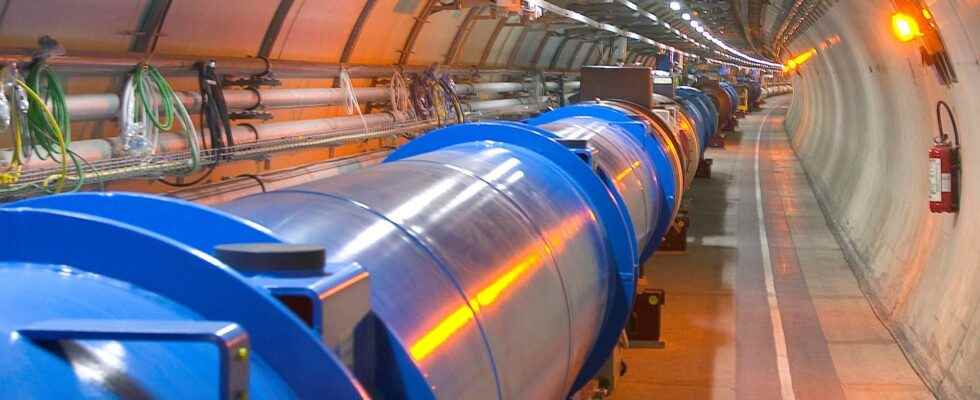Engineers and physicists of CERN (European Council for Nuclear Research) are committed to design of a high-luminosity LHC (HL-LHC) making it possible to go from around one billion proton-proton collisions per second to 5 or even 7 billion collisions per second, which should make it possible to accumulate around 10 times more data between 2026 and 2036, at when the HL-LHC will in turn go hunting the new physics.
Recall that, for a high school physicist energies, the discovery of new particles and the investigation of their properties are not only a question of energy but also of brightness. Indeed, when it comes to detecting new particles whose production is rare, it is necessary to use particle beams that are all the more intense to multiply the number of collisions per second, otherwise centuries of observations would sometimes be necessary to announce a discovery. The situation is the same as in astronomy for photographing a faint source, for example because it is far away. Either a very long pause time is required, or the number of photons collected with a telescope of larger diameter.
A presentation of the HL-LHC. To obtain a fairly accurate French translation, click on the white rectangle at the bottom right. The English subtitles will then appear. Then click on the gear wheel to the right of the rectangle, then on “Subtitles” and finally on “Translate automatically”. Choose “French”. © Cern
As stated Fabiola Gianotti, CEO of CERN, ” the LHC at high luminosity will extend the reach of the LHC beyond its original mission, bringing new opportunities for discoveries, to more accurately measure the properties of particles like the higgs boson and to probe even more deeply the fundamental constituents ofuniverse“. Hopefully it will validate the theory of supersymmetry, or even discover that particles of matter are in fact composed of rishons.
You will also be interested
[EN VIDÉO] Why is the Higgs boson so important? Why is the Higgs boson so important to physicists? This is the question answered by Nathalie Besson, from CEA, who is studying the W and Z bosons with the Atlas detector at the LHC. This particle was only a prediction and its discovery validated the Standard Model, the basic theory of particle physics, which works great but does not predict everything, for example dark matter and energy. Consolidated by the discovery of the Higgs boson, it can be better tested to, perhaps, take physics to new paths.
Interested in what you just read?
.
fs4
